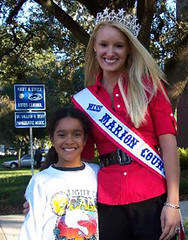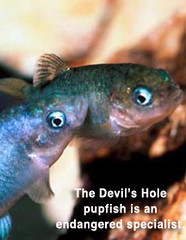There are only three full days left before many of the questions surrounding Jericho, the television series given a reprieve last year, begin to shift from speculations and to undeniable facts. Starting Feb. 12 and for the weeks that follow, CBS executives will be considering which of two second season episodes shot will air on week seven.
Will that episode wrap the fan-inspired story forever or usher in a complete unabridged third season?
It’s not the only question, but it is the one that is weighing heavily on the minds of several thousand fans who spent the last nine months talking up the show that they helped save with about 125,000 signatures, 40,000 pounds of nuts, and countless e-mails, postcards, letters, phone calls, blog posts, articles, interviews, forum discussions, YouTube videos, etc. No one really knows the answer, but there are plenty of people hoping for much more than seven installments.
“I was just thinking about those shiny new episodes that everyone has worked SO hard for. There seems to be a buzz about them, but my greatest fear is that this is the beginning of the end. We got CBS to reconsider their decision, but will the public follow?” — Jessielynne73 (fan screen name)
“The one thing that stands out the most to me is how Schumi made sure to stress that everyone’s efforts counted, and how much her daily ‘command orders’ inspired us all." — Maybei (fan screen name)
“What stood out to me were the awesome videos made by the fans to encourage and inspire us in the fight to get Jericho back. I am so glad that CBS is acknowledging them on the Jericho homepage with the fan video of the day." — DBalcer1 (fan screen name)
“I’m in Romania so the show aired here [much later]. I’ve gotten hooked on the show since … and I’ll be hooked for the rest of my life.” — Twister22 (fan screen name)
"What stood out in my mind was the commitment everyone made to make sure Jericho was not forgotten. I love that the actors have said how much they appreciate and love the show (and their fans). That's rare in TV series."— Idyoutlw (fan screen name)
“What stands out to me is what hard work it's been, but it has ultimately been worth it. I've talked to people I would probably never gotten to know otherwise, learned a lot, and made some good friends. Even if (heaven forbid) we don't get any more than these seven episodes, it was all worth it, and I'd do it again." — LisiBee (fan screen name)
For the fans, it must seem like another lifetime when the only question people asked was what would CBS executives do with 22,000 pounds of nuts?, an early estimate that was quickly eclipsed with 18,000 more.
That question was answered: the peanuts were sent to the zoo; the “Jericho nuts” were sent the promise of seven shows.
Jericho "nuts" doesn’t have as much charm as “Jericho Rangers,” as I know them, but Ken Tucker with Entertainment Weekly seems to have some doubts whether season two will have mass appeal. Although temperate in his review, he did see some promise in two performers, who he says bring “some cracked intensity into this grim fantasy.”
We shall see. Much like we’ll see the answers to many other questions even though I suspect some will never really be answered.
“Will CBS, which cancelled 20 projects during the writer’s strike, reconsider how it counts Nielsen ratings?”
“Did the three episode leak help, hurt, or have no bearing on the premiere of the second season?”
“Did the writer’s strike (which just reached a tentative agreement) help attract viewers who are starved for new non-reality show content on television?”
“Would fans have fared even better without the just-below-the-surface in-fighting among the most visible?”
“Did the fans meet those conditions uttered by CBS Entertainment President Nina Tassler that they had to 'recruit more fans?'”
“Will CBS ever learn how lightly guided consumer marketing and social media really works?”
“Does Jake fit better with Heather or Emily?”
Doubtful. Almost. Not like it could have. Probably. Maybe. Its online viewing platform certainly looks better. And last but not least, there are some fan debates you learn to stay far away from.
Personally, I just hope the fans are able to punctuate the impossible show cancellation reversal and capture enough ratings to see their efforts stick. Objectively, the ratings of season two episode one will matter less than season two episode three or four.
I also won’t be surprised if NBC or FOX pays some attention to the outcome. With more then 2,600 boxes of Rice-A-Roni (not counting individual shipments) being mailed to Jeff Zucker, NBC might find going back in time and undoing a decision is sometimes better than starting from scratch.
Wouldn’t that be something? I know a girl detective who would think so too. But for now, it’s all about the little town in Kansas that thought it could. Given that I believe consumers matter, I hope it can.
For a behind-the-scenes look at season two and some surprisingly crisp full episodes of season one, visit CBS here.
Special thanks to Jane Sweat who contributed fan comments to this piece.

Will that episode wrap the fan-inspired story forever or usher in a complete unabridged third season?
It’s not the only question, but it is the one that is weighing heavily on the minds of several thousand fans who spent the last nine months talking up the show that they helped save with about 125,000 signatures, 40,000 pounds of nuts, and countless e-mails, postcards, letters, phone calls, blog posts, articles, interviews, forum discussions, YouTube videos, etc. No one really knows the answer, but there are plenty of people hoping for much more than seven installments.
“I was just thinking about those shiny new episodes that everyone has worked SO hard for. There seems to be a buzz about them, but my greatest fear is that this is the beginning of the end. We got CBS to reconsider their decision, but will the public follow?” — Jessielynne73 (fan screen name)
“The one thing that stands out the most to me is how Schumi made sure to stress that everyone’s efforts counted, and how much her daily ‘command orders’ inspired us all." — Maybei (fan screen name)
“What stood out to me were the awesome videos made by the fans to encourage and inspire us in the fight to get Jericho back. I am so glad that CBS is acknowledging them on the Jericho homepage with the fan video of the day." — DBalcer1 (fan screen name)
“I’m in Romania so the show aired here [much later]. I’ve gotten hooked on the show since … and I’ll be hooked for the rest of my life.” — Twister22 (fan screen name)
"What stood out in my mind was the commitment everyone made to make sure Jericho was not forgotten. I love that the actors have said how much they appreciate and love the show (and their fans). That's rare in TV series."— Idyoutlw (fan screen name)
“What stands out to me is what hard work it's been, but it has ultimately been worth it. I've talked to people I would probably never gotten to know otherwise, learned a lot, and made some good friends. Even if (heaven forbid) we don't get any more than these seven episodes, it was all worth it, and I'd do it again." — LisiBee (fan screen name)
For the fans, it must seem like another lifetime when the only question people asked was what would CBS executives do with 22,000 pounds of nuts?, an early estimate that was quickly eclipsed with 18,000 more.
That question was answered: the peanuts were sent to the zoo; the “Jericho nuts” were sent the promise of seven shows.
Jericho "nuts" doesn’t have as much charm as “Jericho Rangers,” as I know them, but Ken Tucker with Entertainment Weekly seems to have some doubts whether season two will have mass appeal. Although temperate in his review, he did see some promise in two performers, who he says bring “some cracked intensity into this grim fantasy.”
We shall see. Much like we’ll see the answers to many other questions even though I suspect some will never really be answered.
“Will CBS, which cancelled 20 projects during the writer’s strike, reconsider how it counts Nielsen ratings?”
“Did the three episode leak help, hurt, or have no bearing on the premiere of the second season?”
“Did the writer’s strike (which just reached a tentative agreement) help attract viewers who are starved for new non-reality show content on television?”
“Would fans have fared even better without the just-below-the-surface in-fighting among the most visible?”
“Did the fans meet those conditions uttered by CBS Entertainment President Nina Tassler that they had to 'recruit more fans?'”
“Will CBS ever learn how lightly guided consumer marketing and social media really works?”
“Does Jake fit better with Heather or Emily?”
Doubtful. Almost. Not like it could have. Probably. Maybe. Its online viewing platform certainly looks better. And last but not least, there are some fan debates you learn to stay far away from.
Personally, I just hope the fans are able to punctuate the impossible show cancellation reversal and capture enough ratings to see their efforts stick. Objectively, the ratings of season two episode one will matter less than season two episode three or four.
I also won’t be surprised if NBC or FOX pays some attention to the outcome. With more then 2,600 boxes of Rice-A-Roni (not counting individual shipments) being mailed to Jeff Zucker, NBC might find going back in time and undoing a decision is sometimes better than starting from scratch.
Wouldn’t that be something? I know a girl detective who would think so too. But for now, it’s all about the little town in Kansas that thought it could. Given that I believe consumers matter, I hope it can.
For a behind-the-scenes look at season two and some surprisingly crisp full episodes of season one, visit CBS here.
Special thanks to Jane Sweat who contributed fan comments to this piece.























